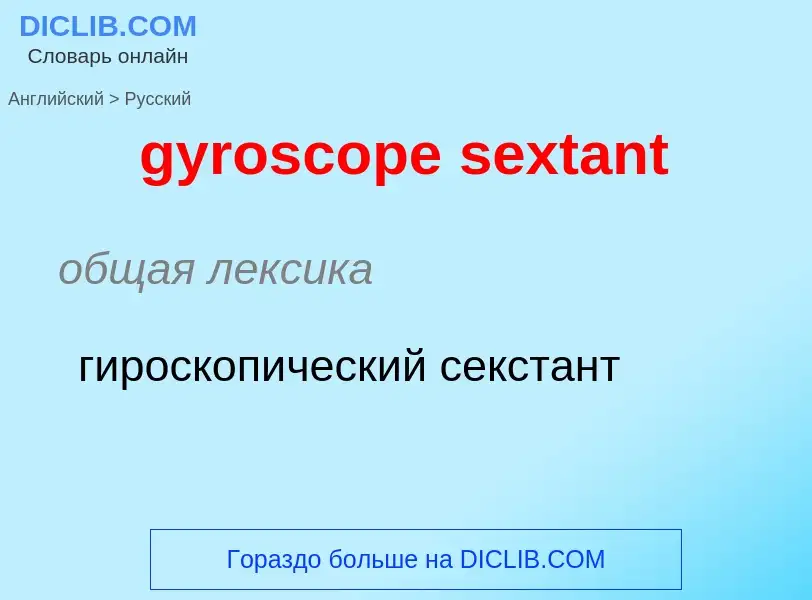Translation and analysis of words by ChatGPT artificial intelligence
On this page you can get a detailed analysis of a word or phrase, produced by the best artificial intelligence technology to date:
- how the word is used
- frequency of use
- it is used more often in oral or written speech
- word translation options
- usage examples (several phrases with translation)
- etymology
gyroscope sextant - translation to russian
общая лексика
гироскопический секстант
['sekstənt]
общая лексика
секстант
шестая часть круга
существительное
общая лексика
секстант (прибор)
секстант
шестая часть окружности
математика
шестая часть круга
Definition
Wikipedia

A sextant is a doubly reflecting navigation instrument that measures the angular distance between two visible objects. The primary use of a sextant is to measure the angle between an astronomical object and the horizon for the purposes of celestial navigation.
The estimation of this angle, the altitude, is known as sighting or shooting the object, or taking a sight. The angle, and the time when it was measured, can be used to calculate a position line on a nautical or aeronautical chart—for example, sighting the Sun at noon or Polaris at night (in the Northern Hemisphere) to estimate latitude (with sight reduction). Sighting the height of a landmark can give a measure of distance off and, held horizontally, a sextant can measure angles between objects for a position on a chart. A sextant can also be used to measure the lunar distance between the moon and another celestial object (such as a star or planet) in order to determine Greenwich Mean Time and hence longitude. The principle of the instrument was first implemented around 1731 by John Hadley (1682–1744) and Thomas Godfrey (1704–1749), but it was also found later in the unpublished writings of Isaac Newton (1643–1727).
In 1922, it was modified for aeronautical navigation by Portuguese navigator and naval officer Gago Coutinho.


![U.S. Navy Quartermaster]] 3rd Class, practices using a sextant as part of a navigation training aboard the amphibious assault ship [[USS Bonhomme Richard (LHD 6)]], 2018 U.S. Navy Quartermaster]] 3rd Class, practices using a sextant as part of a navigation training aboard the amphibious assault ship [[USS Bonhomme Richard (LHD 6)]], 2018](https://commons.wikimedia.org/wiki/Special:FilePath/180423-N-DL434-149 (27894845758).jpg?width=200)


